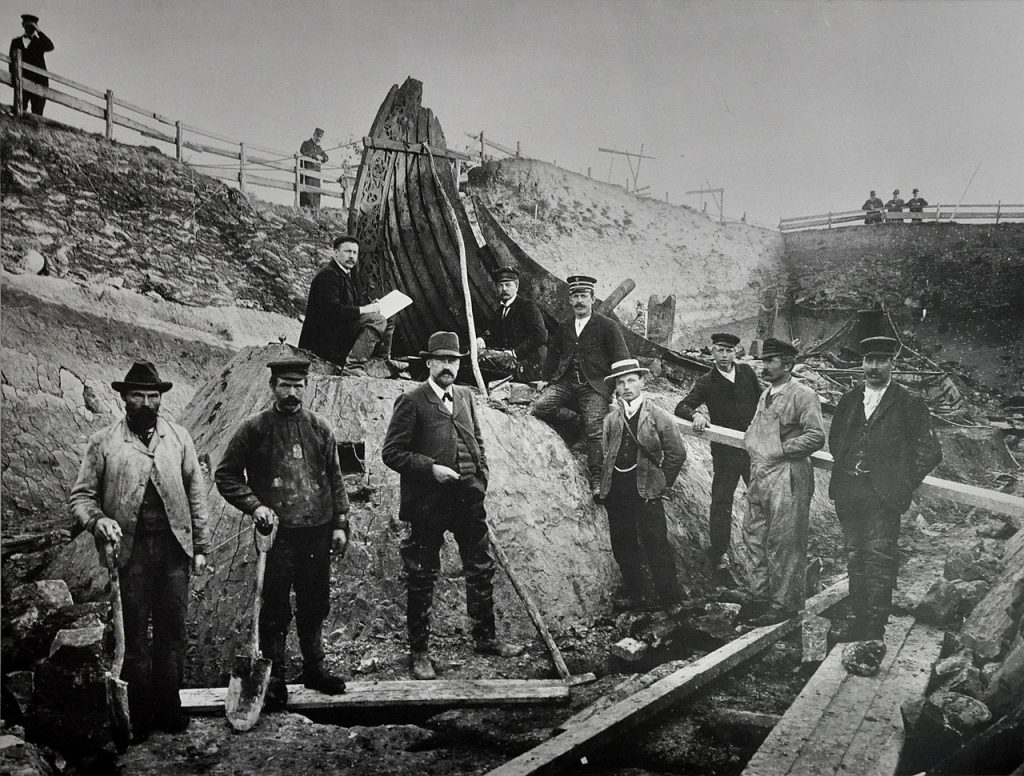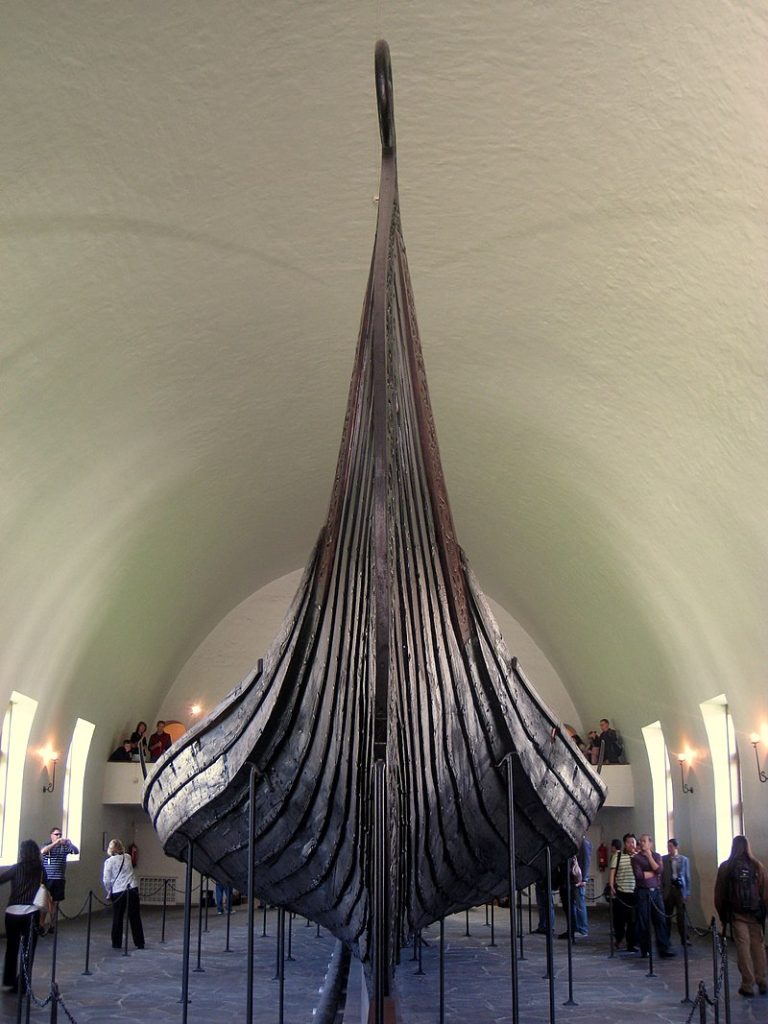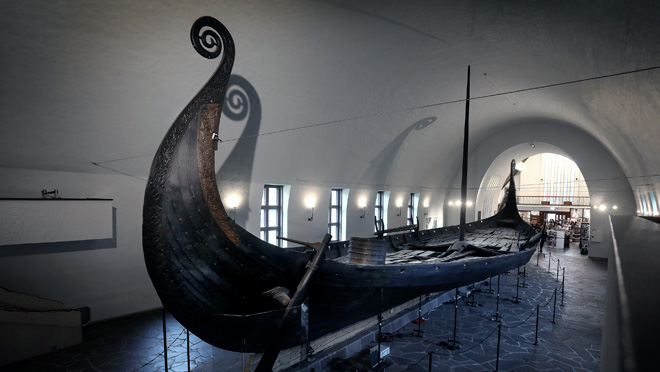The Oseberg Viking Ship is one of the most significant archaeological discoveries in Viking history. The ship was discovered in a burial mound in the Oseberg farm in Norway in 1903, and it has since been a topic of fascination and study for historians and archaeologists around the world.
History of the Oseberg Viking Ship

The ship was discovered by a farmer named Oskar Rom in 1903. The ship was found buried in a large mound on the Oseberg farm, along with various artifacts and remains of two women who were buried in the ship. The ship is believed to have been constructed in the early 9th century, and it is thought to have been used as a burial ship for an important Viking chieftain or queen.
The construction of the ship was a feat of engineering and craftsmanship. The ship is 21.58 meters long and 5.10 meters wide, with a draft of 0.75 meters. The ship was constructed using oak planks that were fastened together with iron rivets. The ship was also adorned with intricate carvings and decorations, including a serpent’s head at the bow and a dragon’s head at the stern.
The ship was buried in the Oseberg farm with two women, one of whom is believed to have been a Viking queen or chieftain. The burial was likely a significant event in Viking society, as the ship and its contents were carefully arranged and placed in the mound. The ship was discovered in remarkably good condition, and it has since been carefully preserved and studied by archaeologists and historians.
Characteristics of the Oseberg Viking Ship

The ship is a remarkable example of Viking shipbuilding and craftsmanship. The ship is 21.58 meters long and 5.10 meters wide, with a draft of 0.75 meters. The ship was constructed using oak planks that were fastened together with iron rivets. The ship was also adorned with intricate carvings and decorations, including a serpent’s head at the bow and a dragon’s head at the stern.
The decorations and carvings on the ship are particularly noteworthy. The ship is adorned with intricate carvings of animals and mythical creatures, including serpents, mythical beasts, and humans. The carvings are incredibly detailed and suggest a high degree of skill and artistry. The carvings on the Oseberg Viking Ship are considered some of the finest examples of Viking art in existence.
Significance of the Oseberg Viking Ship
The Oseberg Viking Ship is an incredibly significant discovery in Viking history. The ship provides a unique insight into the shipbuilding techniques and craftsmanship of the Vikings, as well as their society and culture.
The ship’s burial is also significant. The ship was likely used as a burial ship for an important Viking chieftain or queen, and the burial suggests that the Vikings had complex burial rituals and beliefs. The ship and its contents were carefully arranged and placed in the mound, suggesting that the burial was a significant event in Viking society.
The ship is also significant from an archaeological and historical perspective. The ship has provided valuable information about Viking shipbuilding techniques and materials, as well as the art and culture of the Vikings. Ongoing research on the ship and its contents continues to shed new light on Viking society and culture.
Conclusion
In conclusion, the viking ship is a remarkable discovery that has provided valuable insights into Viking shipbuilding, art, and culture. The ship’s construction, decorations, and burial are all significant, and ongoing research on the ship and its contents continues to shed new light on Viking society and history.
FAQs
The ship was constructed using oak planks that were fastened together with iron rivets.
The Oseberg Viking Ship is currently located in the Viking Ship Museum in Oslo, Norway.
Ongoing research on the Oseberg Viking Ship is focused on understanding more about Viking shipbuilding techniques and materials, as well as the art and culture of the Vikings.


